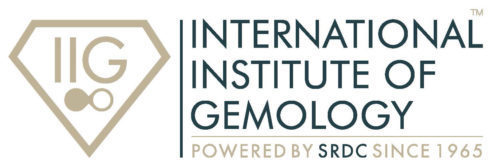Introduction: In today’s dynamic gems and jewellery industry, a deep understanding of diamonds is crucial for both business-to-business (B2B) and business-to-consumer (B2C) clients. With the emergence of lab-grown diamonds alongside natural diamonds, there’s a growing need for comprehensive diamond education to discern the differences between the two. This blog explores the importance of diamond education in enabling B2B and B2C clients to make informed decisions and navigate the complexities of the global diamond market.
The Mother Earth’s gift – Natural Diamonds: –
A natural diamond is a mineral composed of carbon atoms arranged in a crystal lattice structure. It is formed deep within the Earth’s mantle under high pressure and temperature conditions. The growth process of natural diamonds is a fascinating journey that spans millions to billions of years.
Natural diamonds begin their journey as carbon atoms trapped deep within the Earth’s mantle. These carbon atoms are subjected to extreme heat and pressure, typically found at depths of 140 to 190 kilometres (87 to 118 miles) below the Earth’s surface.
Volcanic eruptions or other geological events bring diamonds closer to the surface. These eruptions carry diamond-bearing rocks called kimberlites or lamproites from the mantle to the Earth’s surface.
As the diamond-bearing rocks move closer to the surface, they encounter lower pressure and temperature conditions, allowing the diamonds to crystallize and form. This process is analogous to the cooling and crystallization of magma into igneous rock. Once formed, diamonds may be exposed on the Earth’s surface through erosion and weathering processes, where they can be discovered by humans.
The beauty of natural diamonds lies not only in their physical appearance but also in the remarkable journey they undergo to reach the Earth’s surface. Each natural diamond is a unique product of geological processes that have unfolded over vast stretches of time. Their rarity, durability, and inherent brilliance make them highly valued gemstones. Additionally, the allure of natural diamonds is often enhanced by their history, as they carry the stories of the Earth’s geological evolution within their crystalline structures.
 The Human Intelligence – Lab-grown diamonds: –
The Human Intelligence – Lab-grown diamonds: –
Lab grown diamonds, also known as synthetic or cultured diamonds, are created through technological processes that simulate the natural conditions under which diamonds form within the Earth’s mantle. While they share many characteristics with natural diamonds, there are several unique aspects of lab-grown diamonds:
Lab-grown diamonds are created in controlled laboratory environments rather than through geological processes deep within the Earth. This allows for precise control over the diamond’s growth conditions, resulting in consistent quality and purity.
While natural diamonds can take millions to billions of years to form, lab-grown diamonds can be produced in a matter of weeks to months, depending on the method used. This significantly shorter production time makes lab-grown diamonds a more sustainable and readily available alternative to natural diamonds.
The production of lab-grown diamonds typically has a lower environmental impact compared to traditional diamond mining. It requires less energy and does not involve the extensive land disruption and ecosystem degradation associated with mining operations.
Lab-grown diamonds often cost less than natural diamonds of comparable quality and size. This affordability makes them an attractive option for consumers who value sustainability and ethical sourcing.
Lab-grown diamonds offer opportunities for customization that may not be feasible with natural diamonds. Manufacturers can control various aspects of the diamond’s characteristics, such as size, shape, color, and clarity, to meet specific customer preferences.
Lab-grown diamonds are inherently conflict-free, as they are produced in controlled laboratory environments rather than sourced from regions associated with diamond-related conflicts or human rights abuses.
While lab-grown diamonds possess the same physical, chemical, and optical properties as natural diamonds, they can often be distinguished through specialized gemological testing. For example, certain growth patterns or trace elements may indicate a diamond’s synthetic origin.
Overall, lab-grown diamonds offer a sustainable, ethical, and customizable alternative to natural diamonds, with unique advantages that appeal to a wide range of consumers.
 Natural or Lab-grown diamonds – Major Concern for current Gems and Jewellery Industry Globally: –
Natural or Lab-grown diamonds – Major Concern for current Gems and Jewellery Industry Globally: –
As per the current industry speaks, there are several market gaps and integrity issues exist within the gems and jewellery industry, particularly concerning lab-grown diamonds. Here are some key points:
One of the significant challenges in the gems and jewellery industry, the misrepresentation of lab-grown diamonds as natural diamonds is a deceptive practice that undermines the integrity of the gems and jewellery industry. Lab-grown diamonds, while sharing similar physical and chemical properties with natural diamonds, are distinct in their origin and value proposition. By falsely presenting lab-grown diamonds as natural diamonds, unethical traders seek to capitalize on the premium associated with natural stones, deceiving consumers and tarnishing the reputation of the industry.
Consumers often face difficulties in determining whether a diamond is natural or lab-grown, as well as its origin and history. This lack of transparency can lead to integrity issues and consumer mistrust.
There is a need for standardized certification and grading standards for lab-grown diamonds to ensure consistency and transparency in the market. Currently, various organizations provide certifications and grading for lab-grown diamonds, but the lack of universally accepted standards can create confusion and inconsistency.
Many consumers are still unaware of the differences between natural and lab-grown diamonds, as well as the ethical and environmental implications of their choices. There is a need for increased education and awareness efforts to help consumers make informed decisions and understand the implications of their purchases.
The gems and jewellery industry faces challenges in effectively segmenting the market for natural and lab-grown diamonds. While some consumers prioritize the authenticity and rarity of natural diamonds, others may prefer the affordability and sustainability of lab-grown diamonds. Finding the right balance and effectively targeting different consumer segments can be challenging for industry players.
Ensuring the integrity of the supply chain is crucial for both natural and lab-grown diamonds. Issues such as conflict diamonds (diamonds mined in war zones and sold to finance conflict) and environmental concerns associated with diamond mining can affect consumer perception and trust in the industry.
Addressing these market gaps and integrity issues requires collaboration among industry stakeholders, including governments, manufacturers, retailers, and certification organizations. Implementing transparent supply chain practices, standardized certification standards, and consumer education initiatives can help improve integrity and trust within the gems and jewellery industry.
 Education – The Foremost need to the current Integrity issues in gems and jewellery industry.
Education – The Foremost need to the current Integrity issues in gems and jewellery industry.
Education plays a crucial role in resolving issues and raising trust within the gems and jewellery industry, particularly concerning lab-grown diamonds and integrity issues. Here’s a detailed description of how education can address these challenges:
- Consumer Awareness and Empowerment:
- Education initiatives can focus on raising consumer awareness about the differences between natural and lab-grown diamonds, as well as their respective characteristics, origins, and value propositions.
- Consumers need to understand the ethical, environmental, and social implications of their diamond purchases. Education can empower consumers to make informed decisions aligned with their values and preferences.
- Transparency in the Supply Chain:
- Education can promote transparency in the diamond supply chain by educating industry stakeholders about the importance of traceability, ethical sourcing, and responsible practices.
- Retailers and manufacturers can implement transparency initiatives and communicate the journey of diamonds from mine to market to build trust with consumers.
- Certification and Grading Standards:
- Education efforts can focus on promoting standardized certification and grading standards for both natural and lab-grown diamonds.
- Training programs can be developed to educate gemmologists, jewellers, and industry professionals about the identification, grading, and certification of diamonds, including the detection of lab-grown diamonds.
- Diamond education facilitates quality assurance and certification processes, ensuring that both natural and lab-grown diamonds meet industry standards. B2B clients rely on education to navigate the certification landscape and verify the authenticity and quality of diamonds sourced from suppliers. Likewise, B2C clients seek assurance through reputable certifications, such as those provided by the Gemological Institute of America (GIA) or International Gemological Institute (IGI), to validate their diamond purchases.
- Ethical and Sustainable Practices:
- Education can raise awareness about ethical and sustainable practices in diamond mining, manufacturing, and trade.
- Industry stakeholders can be educated about responsible sourcing initiatives, such as the Kimberley Process Certification Scheme for natural diamonds and initiatives promoting ethical labour practices and environmental stewardship.
- Combatting Misrepresentation and Fraud:
- Education can help prevent misrepresentation and fraud by training industry professionals to accurately identify and disclose the origin of diamonds.
- Gemmologists and jewellers can receive training on detection techniques for lab-grown diamonds and the use of advanced testing equipment, such as spectroscopy and microscopy, to distinguish between natural and lab-grown diamonds.
- Detection of Falsified or Altered Certifications:
- Lab certifications serve as vital tools for verifying the authenticity and characteristics of diamonds, including their origin and type. However, unethical traders may resort to falsifying or altering lab certifications to misrepresent lab-grown diamonds as natural diamonds.
- Diamond education equips industry professionals with the expertise to scrutinize certifications for inconsistencies, discrepancies, and signs of tampering. By conducting thorough examinations and due diligence, professionals can identify and expose instances of fraudulent certification, thereby upholding the integrity of the industry.
- Adaptation to Market Trends:
- The gems and jewellery industry is constantly evolving, with shifting consumer preferences and technological advancements shaping market trends. Diamond education enables B2B and B2C clients to stay abreast of industry developments, such as the rise of lab-grown diamonds and advancements in diamond-growing technologies.
- By embracing education, businesses can adapt to emerging trends and capitalize on new opportunities in the global diamond market.
- Collaborative Efforts and Industry Standards:
- Addressing unfair trade practices requires collaborative efforts and adherence to industry standards and regulations. Diamond education initiatives, supported by industry associations, certification bodies, and educational institutions, play a vital role in disseminating knowledge and raising awareness about ethical trading practices.
- By promoting adherence to established standards and ethical guidelines, education contributes to the establishment of a fair and transparent marketplace for diamonds.
- Building Trust and Credibility:
- Education initiatives can contribute to building trust and credibility within the gems and jewellery industry by promoting integrity, professionalism, and ethical conduct among industry stakeholders.
- Training programs can emphasize the importance of compliance with industry regulations, ethical guidelines, and best practices to enhance the industry’s reputation and trustworthiness.
- In an increasingly competitive market, building consumer confidence and trust is essential for B2C clients. Diamond education equips retailers and brands with the knowledge to communicate effectively with consumers, addressing their concerns and preferences regarding diamond origins and characteristics. By providing transparent information and educational resources, businesses can establish trust and credibility, fostering long-term relationships with their clients.
 Matter of fact: –
Matter of fact: –
Overall, education plays a fundamental role in addressing the challenges and integrity issues within the gems and jewellery industry, fostering transparency, empowering consumers, promoting responsible practices, and building trust and credibility among industry stakeholders. By investing in education and training initiatives, the industry can enhance its integrity and reputation while meeting the evolving needs and expectations of consumers. In conclusion, diamond education is indispensable for B2B and B2C clients in the gems and jewellery industry, facilitating informed decision-making and fostering ethical practices. As the industry continues to evolve, education remains a cornerstone for building trust, ensuring quality, and driving sustainable growth in the global diamond trade. Through collaborative efforts and a commitment to education, the industry can combat unfair trade practices and uphold its reputation as a bastion of integrity and trustworthiness.

